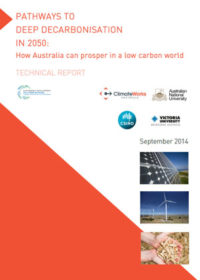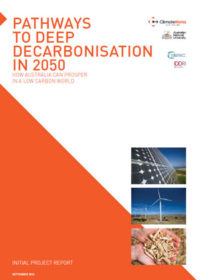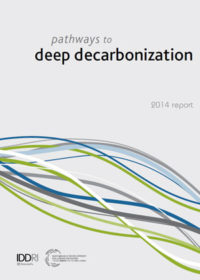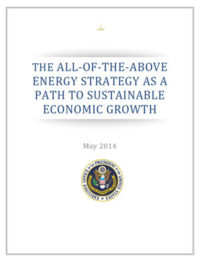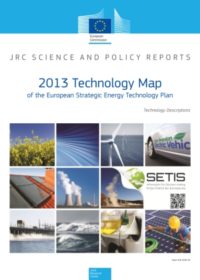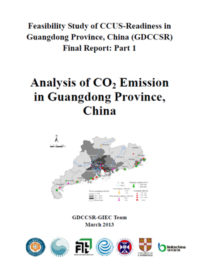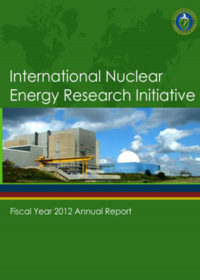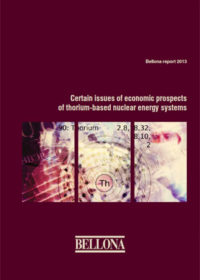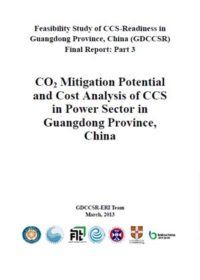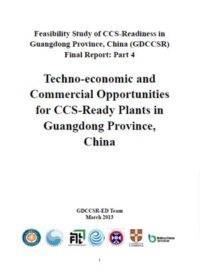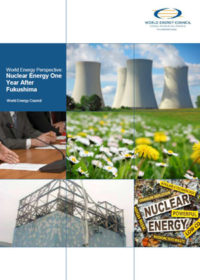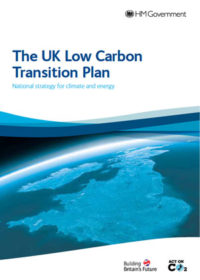Resources
Publications
Our publications, reports and research library hosts over 500 specialist reports and research papers on all topics associated with CCS.
View our Publication Library Disclaimer.
Filter by
Pathways to deep decarbonisation in 2050: how Australia can prosper in a low carbon world. Technical report
23rd September 2014
Topic(s): Carbon capture use and storage (CCUS), Economics, Energy efficiency, Fuel switching, Nuclear energy, Renewables
This report presents the technical analysis supporting ClimateWorks’ Pathways to Deep Decarbonisation in 2050: How Australia Can Prosper in a Low Carbon World. It provides readers with details on assumptions, data, and modelling tools. This Technical Report provides detailed results and a discussion of limitations.
Disclaimer
The content within the Global CCS Institute Publications, Reports and Research Library is provided for information purposes only. We make every effort and take reasonable care to keep the content of this section up-to-date and error-free. However, we make no claim as to its accuracy, currency or reliability.
Content and material featured within this section of our website includes reports and research published by third parties. The content and material may include opinions and recommendations of third parties that do not reflect those held by the Global CCS Institute.
Pathways to deep decarbonisation in 2050: how Australia can prosper in a low carbon world
23rd September 2014
Topic(s): Carbon capture use and storage (CCUS), Economics, Energy efficiency, Fuel switching, Nuclear energy, Renewables
Pathways to Deep Decarbonisation in 2050: How Australia Can Prosper in a Low Carbon World presents an illustrative deep decarbonisation pathway for Australia - just one of many possible pathways - developed using a combination of well-established modelling tools to identify feasible and least-cost options. The frame of reference for the analysis is that all countries decarbonise by 2050, consistent with the objective of limiting the increase in global mean surface temperature to 2°C in order to avoid dangerous climate change.
This initial project report shows that Australia can achieve net zero emissions by 2050 and live within its recommended carbon budget, using technologies that exist today (including carbon capture and storage), while maintaining economic prosperity. Major technological transitions are needed in some industries and many activities, but no fundamental change to Australia’s economy is required. Economic activity and Australian incomes keep rising. The economy grows by 150% to 2050, while net emissions fall to zero and energy sector emissions are reduced by more than four fifths.
This report is accompanied by the Technical Report which gives detail on assumptions, data, modelling tools and detailed results.
Disclaimer
The content within the Global CCS Institute Publications, Reports and Research Library is provided for information purposes only. We make every effort and take reasonable care to keep the content of this section up-to-date and error-free. However, we make no claim as to its accuracy, currency or reliability.
Content and material featured within this section of our website includes reports and research published by third parties. The content and material may include opinions and recommendations of third parties that do not reflect those held by the Global CCS Institute.
Pathways to deep decarbonization: 2014 report
19th September 2014
Topic(s): Carbon capture use and storage (CCUS), Economics, Energy efficiency, Fuel switching, Nuclear energy, Renewables
This 2014 report by the Deep Decarbonization Pathway Project (DDPP) summarises preliminary findings of the technical pathways developed by the DDPP Country Research Partners with the objective of achieving emission reductions consistent with limiting global warming to less than 2°C., without, at this stage, consideration of economic and social costs and benefits.
Disclaimer
The content within the Global CCS Institute Publications, Reports and Research Library is provided for information purposes only. We make every effort and take reasonable care to keep the content of this section up-to-date and error-free. However, we make no claim as to its accuracy, currency or reliability.
Content and material featured within this section of our website includes reports and research published by third parties. The content and material may include opinions and recommendations of third parties that do not reflect those held by the Global CCS Institute.
The all-of-the-above energy strategy as a path to sustainable economic growth
1st May 2014
Topic(s): Carbon capture use and storage (CCUS), Economics, Energy efficiency, Nuclear energy, Policy law and regulation, Renewables
The President of the United States has set out an aggressive All-of-the-Above strategy on energy. Some of the recent trends in the energy sector predate the Administration and stem from technological advances and risk-taking by American entrepreneurs and businesses, as well as from government-supported research and other public policies. The All-of-the-Above energy strategy supports these trends through environmentally responsible production of oil and natural gas. In addition, the Administration has advanced the growth of energy sources with low or zero carbon emissions through programs that support wind, solar, other renewables, and nuclear, and has also helped to reduce energy demand by promoting energy efficiency. The Administration is also supporting an ambitious program of carbon capture, utilization and storage for coal and natural gas power plants and for industrial facilities.
Disclaimer
The content within the Global CCS Institute Publications, Reports and Research Library is provided for information purposes only. We make every effort and take reasonable care to keep the content of this section up-to-date and error-free. However, we make no claim as to its accuracy, currency or reliability.
Content and material featured within this section of our website includes reports and research published by third parties. The content and material may include opinions and recommendations of third parties that do not reflect those held by the Global CCS Institute.
2013 technology map of the European Strategic Energy Technology Plan (SET-Plan): technology descriptions
9th April 2014
Topic(s): Carbon capture use and storage (CCUS), Energy efficiency, Fuel switching, Nuclear energy, Renewables
This publication is a Scientific and Policy Report by the Joint Research Centre of the European Commission. This fourth edition of the Technology Map of the European Strategic Energy Technology Plan (SET-Plan) addresses 22 different technologies, covering the whole spectrum of the energy system, including both supply and demand technologies, namely:
- Wind Power Generation
- Solar Photovoltaic Electricity Generation
- Concentrated Solar Power Generation
- Hydropower
- Geothermal Energy
- Marine Energy
- Cogeneration or Combined Heat and Power
- Carbon Capture and Storage in Power Generation
- Advanced Fossil Fuel Power Generation
- Nuclear Fission Power Generation
- Nuclear Fusion Power Generation
- Smart Grids
- Bioenergy - Power and Heat Generation
- Biofuels for the Transport Sector
- Fuel Cells and Hydrogen
- Electricity Storage in the Power Sector
- Energy Efficiency and CO2 Emission Reduction in Industry (the cement industry, the iron and steel industry, the pulp and paper industry)
- Heating and Cooling
- Heat Pumps
- Energy Performance of Buildings
Disclaimer
The content within the Global CCS Institute Publications, Reports and Research Library is provided for information purposes only. We make every effort and take reasonable care to keep the content of this section up-to-date and error-free. However, we make no claim as to its accuracy, currency or reliability.
Content and material featured within this section of our website includes reports and research published by third parties. The content and material may include opinions and recommendations of third parties that do not reflect those held by the Global CCS Institute.
Analysis of CO2 emission in Guangdong Province, China
15th October 2013
Topic(s): Capacity development, Carbon capture use and storage (CCUS), Nuclear energy
There is an agreement reached in China that CCS should be regarded as an important backup low-carbon technology worth more preliminary research. However, the application of CCS in Guangdong depends on the energy usage and model of the province. Therefore an analysis of Guangdong's energy usage and CO2 emission is helpful to decide whether Guangdong needs to explore utilising CCS technology.
In this report, we first assessed the energy consumption and CO2 emission status of the Guangdong Province based on published data. Then the emission characteristics and trends of major point sources are analysed. Finally the source to sink match analysis is carried out. All these will provide bases for the feasibility study of developing CCS in Guangdong and for compiling the CCS development roadmap for Guangdong.
Disclaimer
The content within the Global CCS Institute Publications, Reports and Research Library is provided for information purposes only. We make every effort and take reasonable care to keep the content of this section up-to-date and error-free. However, we make no claim as to its accuracy, currency or reliability.
Content and material featured within this section of our website includes reports and research published by third parties. The content and material may include opinions and recommendations of third parties that do not reflect those held by the Global CCS Institute.
International Nuclear Energy Research Initiative: fiscal year 2012 annual report
12th August 2013
Topic(s): Nuclear energy
This International Nuclear Energy Research Initiative, or I-NERI, annual report provides information on how research and development efforts are collectively helping to establish a solid foundation for advanced nuclear technologies in the United States.
The I-NERI 2012 Annual Report provides an update on I-NERI accomplishments achieved during Fiscal Year (FY) 2012, including final activities and findings of completed projects and comprehensive progress summaries of ongoing projects.
Disclaimer
The content within the Global CCS Institute Publications, Reports and Research Library is provided for information purposes only. We make every effort and take reasonable care to keep the content of this section up-to-date and error-free. However, we make no claim as to its accuracy, currency or reliability.
Content and material featured within this section of our website includes reports and research published by third parties. The content and material may include opinions and recommendations of third parties that do not reflect those held by the Global CCS Institute.
Certain issues of economic prospects of thorium-based nuclear energy systems
1st April 2013
Topic(s): Economics, Nuclear energy, Nuclear fission
Thorium-based nuclear fuel is thought to play a variety of roles depending on a particular nuclear energy system, which makes it challenging to form judgments regarding the economic prospects of thorium.
Disclaimer
The content within the Global CCS Institute Publications, Reports and Research Library is provided for information purposes only. We make every effort and take reasonable care to keep the content of this section up-to-date and error-free. However, we make no claim as to its accuracy, currency or reliability.
Content and material featured within this section of our website includes reports and research published by third parties. The content and material may include opinions and recommendations of third parties that do not reflect those held by the Global CCS Institute.
CO2 mitigation potential and cost analysis of CCS in power sector in Guangdong Province, China
1st March 2013
Topic(s): Capacity development, Carbon capture use and storage (CCUS), Nuclear energy
This study, authored by the GDCCSR-ERI Team, is the third part of the Feasibility Study of CCS-Readiness in Guangdong (GDCCSR) project, funded by the Strategic Programme Fund of the UK Foreign & Commonwealth Office jointly with the Global CCS Institute. The report opens with a discussion of the energy and power sector in Guangdong. This is followed by an analysis of emission scenarios, and how the power sector might develop under those scenarios. CCS potential is discussed in detail, followed by policy suggestions.
Disclaimer
The content within the Global CCS Institute Publications, Reports and Research Library is provided for information purposes only. We make every effort and take reasonable care to keep the content of this section up-to-date and error-free. However, we make no claim as to its accuracy, currency or reliability.
Content and material featured within this section of our website includes reports and research published by third parties. The content and material may include opinions and recommendations of third parties that do not reflect those held by the Global CCS Institute.
Techno-economic and commercial opportunities for CCS-ready plants in Guangdong Province, China
1st March 2013
Topic(s): Carbon capture use and storage (CCUS), Nuclear energy, Policy law and regulation, Project financing
Guangdong is a pioneer in the reform of the Chinese economy and one of the most developed provinces in China (OECD, 2010). The provincial government of Guangdong plans gradually to establish a green energy system. In late 2010 the government set a target to reduce carbon intensity and a pilot carbon emission trading scheme has started from 2012. However, by March 2010, 16GW of ultra supercritical pulverised coal power plants (USCPC) with a unit size of 1000MW were already in the construction stage, while an even greater amount of large coal-fired power plants are pending for approval. The implementation of CCSR concepts in these plants to ease subsequent retrofitting to CO2 capture therefore becomes an urgent task in Guangdong. This study addresses the technical, economic, financial and stakeholder acceptability aspects of CCSR in Guangdong and investigates potential drivers and barriers to implement CCSR in Guangdong immediately.
Disclaimer
The content within the Global CCS Institute Publications, Reports and Research Library is provided for information purposes only. We make every effort and take reasonable care to keep the content of this section up-to-date and error-free. However, we make no claim as to its accuracy, currency or reliability.
Content and material featured within this section of our website includes reports and research published by third parties. The content and material may include opinions and recommendations of third parties that do not reflect those held by the Global CCS Institute.
World energy perspective: nuclear energy one year after Fukushima
13th March 2012
Topic(s): Nuclear energy
The incident at the Fukushima Daiichi nuclear power plant—the result of a devastating earthquake and subsequent tsunami on March 11, 2011—has re-invigorated the debate about how to meet the world’s growing demands for energy and the contribution of nuclear power to the global energy mix.
This World Energy Council report demonstrates that the Fukushima accident has not so far led to a significant retraction in nuclear power programmes in countries outside Europe, except Japan itself. In Europe, changes in nuclear policies have only taken place in Germany, Switzerland, and Italy. Progress in many national programmes, especially in non-OECD countries, has been delayed, but there is no indication that their pursuit of nuclear power has declined in response to Fukushima.
Disclaimer
The content within the Global CCS Institute Publications, Reports and Research Library is provided for information purposes only. We make every effort and take reasonable care to keep the content of this section up-to-date and error-free. However, we make no claim as to its accuracy, currency or reliability.
Content and material featured within this section of our website includes reports and research published by third parties. The content and material may include opinions and recommendations of third parties that do not reflect those held by the Global CCS Institute.
The UK low carbon transition plan: national strategy for climate and energy
15th July 2009
Topic(s): Carbon capture use and storage (CCUS), Economics, Nuclear energy, Policy law and regulation, Renewables
This White Paper sets out the United Kingdom's low carbon transition plan from 2009 to 2020. This plan aims to deliver emission cuts of 18% on 2008 levels by 2020 (and over a one third reduction on 1990 levels).
Disclaimer
The content within the Global CCS Institute Publications, Reports and Research Library is provided for information purposes only. We make every effort and take reasonable care to keep the content of this section up-to-date and error-free. However, we make no claim as to its accuracy, currency or reliability.
Content and material featured within this section of our website includes reports and research published by third parties. The content and material may include opinions and recommendations of third parties that do not reflect those held by the Global CCS Institute.
